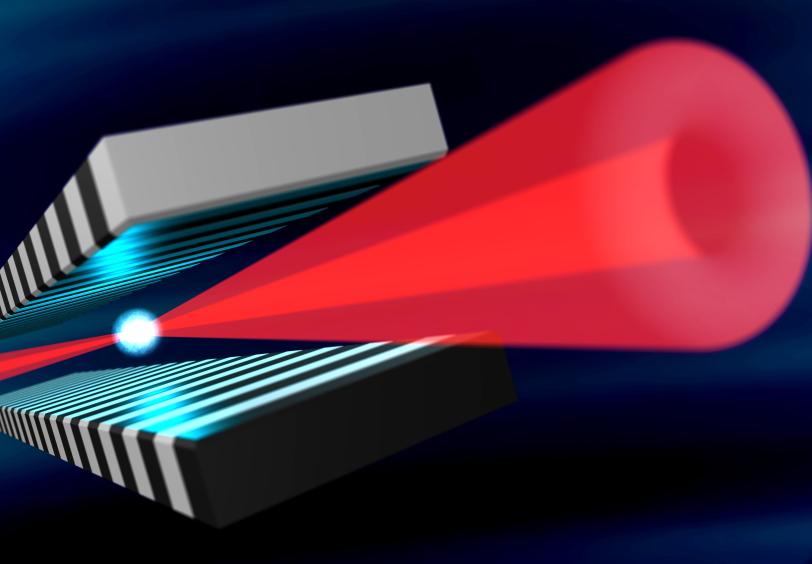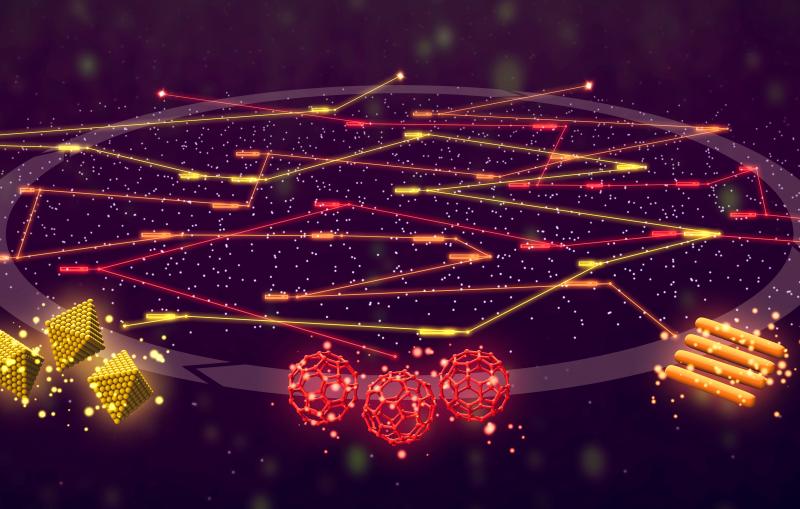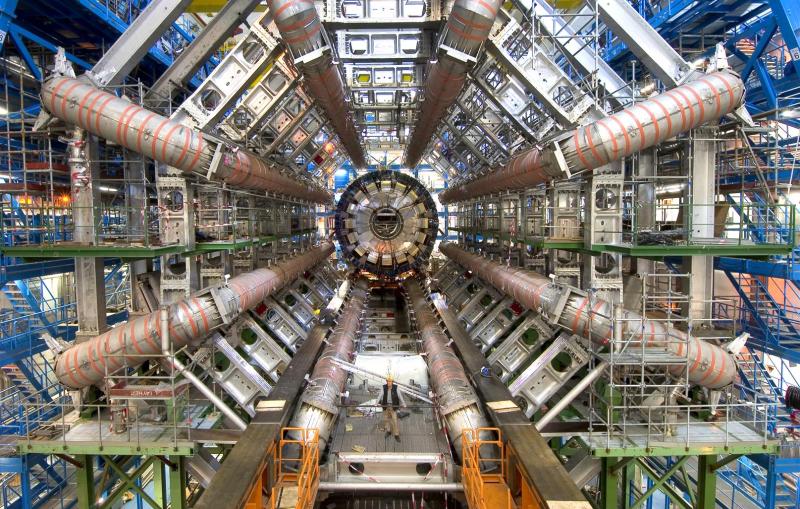To tame an electron bunch in an X-ray laser, scientists put a ring on it
New research shows that when a bunch of electrons zooms through the middle of a ring-shaped laser beam, the bunch can wind up with higher quality and generate a brighter X-ray beam.
A team of scientists has come up with a way to improve electron bunches and produce brighter X-ray beams: Put a ring on them. The team, which includes researchers from the Department of Energy’s SLAC National Accelerator Laboratory and Stanford University, published their results in Physical Review Letters earlier this month.
At X-ray free-electron lasers such as SLAC’s Linac Coherent Light Source (LCLS), scientists compress and accelerate electron bunches to nearly the speed of light, then wiggle them back and forth through a series of magnets to create X-rays. These X-rays are then used to investigate biological, chemical and material samples, enabling scientists to create high-resolution images of how their molecular structures move.

Researchers have found that these electron bunches are most stable when they are long and smooth, like an American football, producing brighter X-rays with more uniform wavelengths and allowing for higher-resolution images. But because electrons repel each when they are generated in a vacuum, the bunches end up shorter and unpredictably uneven, “like a deflated football covered in spikes,” says SLAC scientist and principal investigator Sergio Carbajo.
Inflating the football
To tackle this problem, scientists use a device called a laser heater, a technique that has long been studied at SLAC by co-authors Zhirong Huang and Daniel Ratner. The laser heater shakes the electron bunch back and forth as it follows the path of an infrared laser beam, allowing scientists to create longer, better-shaped bunches. This process injects energy into the bunches, “introducing a little chaos early on to prevent more chaos down the line,” Carbajo says.
“The idea is that if we don’t do anything to inflate and smooth the spikes of the football before sending it down the linear accelerator, the imperfections will amplify and the quality of the beam will deteriorate,” he says. “But if we ‘heat’ the electron and change its energy distribution in the beginning, we can tailor its shape to improve its quality when it reaches the end of the accelerator.”
'Donut laser'
In this new research, the team improved upon this device by hollowing out the laser beam into a ring-shaped “donut laser.” This new electron shaping technique ameliorates the unevenness and produces a more stable bunch because it shakes electrons differently depending on how close they are to the center of the ring. The end result is a perfectly shaped football fit to fly in any subatomic Super Bowl.
“This technique increases the overall quality of the electron bunch,” Carbajo says. “It provides precise control over the shape of an electron beam and so it can be seminal in magnifying the performance of scientific instruments relying on them, such as storage rings, linear accelerators and light sources.”
LCLS is a DOE Office of Science user facility. Graduate students Jingyi Tang from Stanford and Randy Lemons from the Colorado School of Mines played key roles in analyzing the data and generating the donut laser beams in the lab, respectively. This research was supported in part by the Office of Science and the Laboratory Directed Research and Development program at SLAC.
Citation: J. Tang et al., Physical Review Letters, 3 April 2020 (10.1103/PhysRevLett.124.134801)
For questions or comments, contact the SLAC Office of Communications at communications@slac.stanford.edu.
SLAC is a vibrant multiprogram laboratory that explores how the universe works at the biggest, smallest and fastest scales and invents powerful tools used by scientists around the globe. With research spanning particle physics, astrophysics and cosmology, materials, chemistry, bio- and energy sciences and scientific computing, we help solve real-world problems and advance the interests of the nation.
SLAC is operated by Stanford University for the U.S. Department of Energy’s Office of Science. The Office of Science is the single largest supporter of basic research in the physical sciences in the United States and is working to address some of the most pressing challenges of our time.





